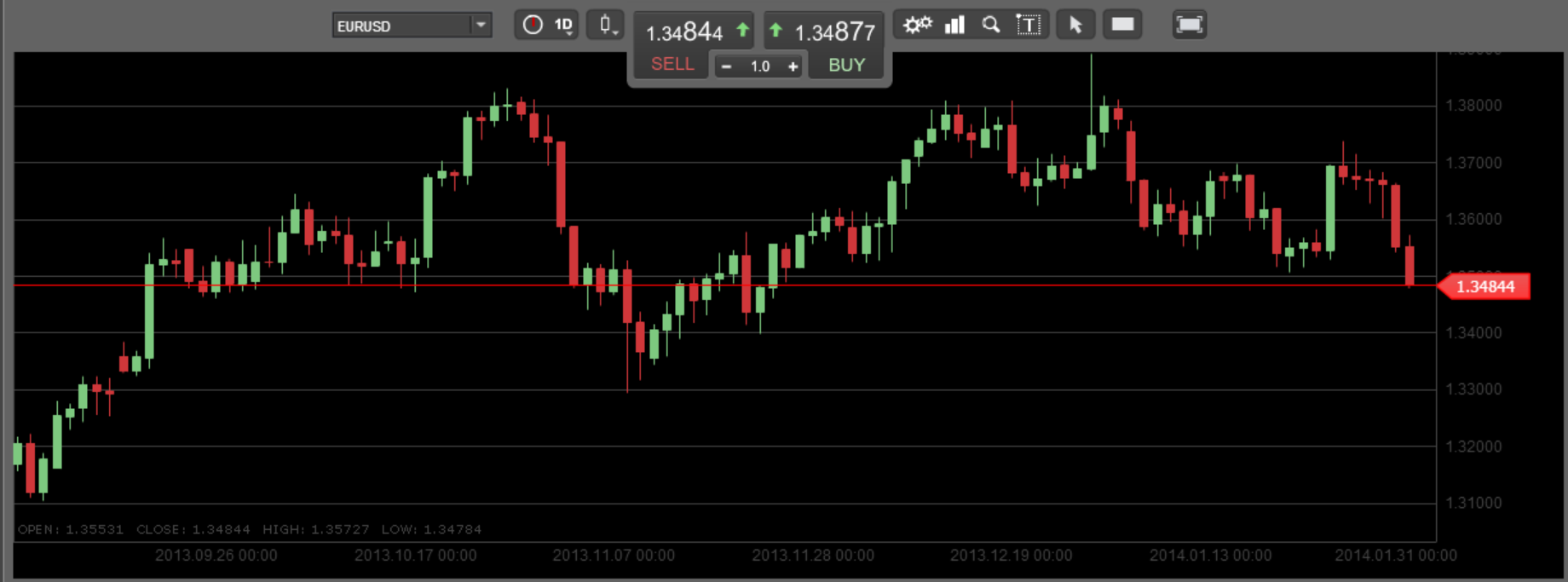By: Richard Cox
Into the end of last year, the Euro was one of the market’s best performing currencies. There were a few different reasons for this but whether or not this strength is ultimately sustainable is an entirely different story. In some cases, the Euro itself has actually been supported by central bank actions. Specifically, the EUR/CHF currency pair was defended through intervention with the decision by the Swiss National Bank (SNB) to enact a price floor at 1.20. This was done as a measure for protecting the country’s important export markets but the move also helps to support the Euro through buying activities in related currency pairs.
From the fundamental side, traders have also grown more optimistic with respect to the major debt problems that have marked the last 5 years. And, externally, central bank expectations at the US Federal Reserve led investors to position for the possibility that stimulus tapering would be delayed. These expectations represented a clear negative for the US Dollar and, since the EUR/USD is the most commonly trader, the anti-Dollar trades created another supportive factor for the Euro.
2014 Turnaround
But there seems to have been a major shift in investor sentiment, as the EUR/USD has come off sharply from last year’s highs just under 1.39. We have now fallen as much as 5 big-figures lower, and most of these declines have been driven by weaker economic data that suggests the regions might not be performing as well as previously thought. “The latest unemployment figures from December,” said Rick Bartlett, markets analyst at CornerTrader, “show that the jobless rate in the Eurozone has yet to fall below 12%.” This is important because we are still dangerously close to the all-time highs for the region at 12.2% -- and this shows that little progress has actually been made in the most important areas of the economy.
This also shows that it might not be too late to start selling the Euro, even with the massive declines we have already seen. Interest rates in the Eurozone are still at all-time lows, so there is little incentive for investors to hold onto the currency for extended periods of time. This does not bode well in terms of prospects for how the EUR/USD is likely to perform for the rest of the year. Going forward, it will be important to watch for breaks of technical support in order to confirm this outlook, but when we take a look at the longer term charts, we can see that this has already started to happen.
Chart Perspective: EUR/USD
The latest declines in the Euro have sent prices through important supposed at 1.35, and this puts the medium term target in the 1.33 area. In order to reverse the bearish bias, we would need to see a break of resistance at 1.3730 but at this stage it is looking less and less likely.

